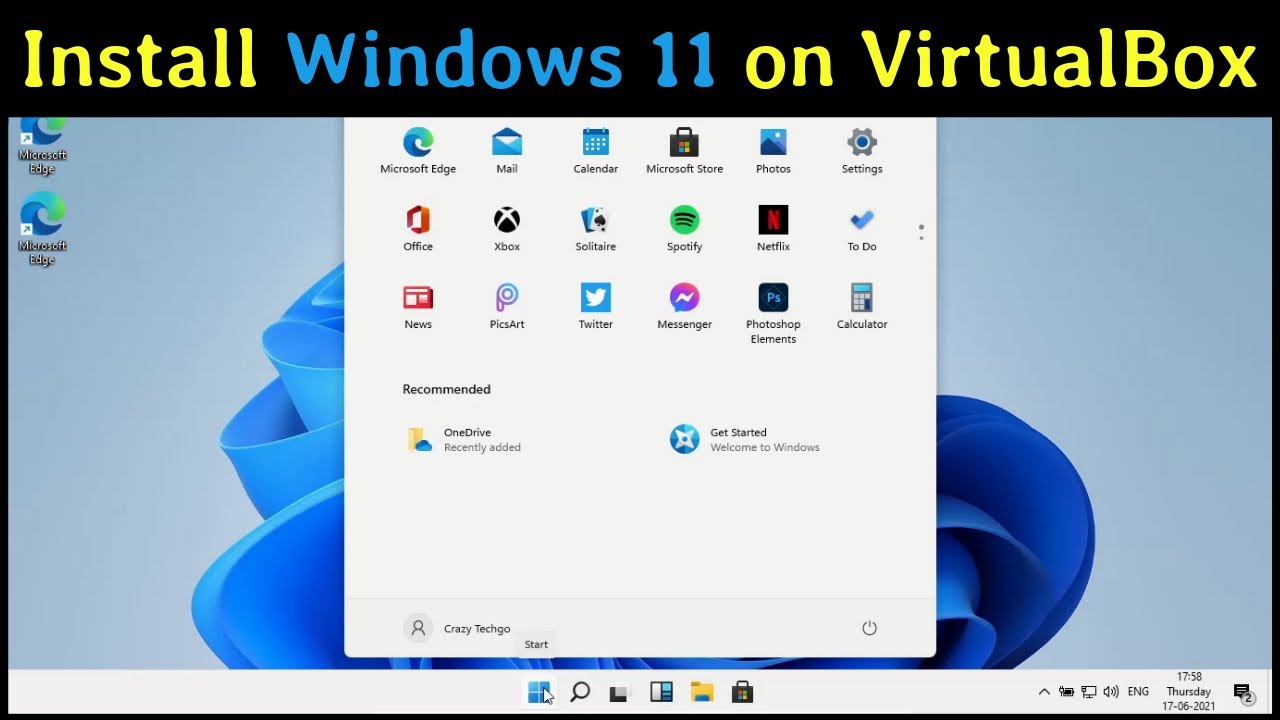

- #How to use virtualbox on windows 8.1 install#
- #How to use virtualbox on windows 8.1 drivers#
- #How to use virtualbox on windows 8.1 software#
- #How to use virtualbox on windows 8.1 trial#
- #How to use virtualbox on windows 8.1 iso#
#How to use virtualbox on windows 8.1 install#
Alternatively you can use the Installer disc option to install Windows 8.1 from a DVD.
#How to use virtualbox on windows 8.1 iso#
#How to use virtualbox on windows 8.1 drivers#
It's a package which provides the necessary drivers for the virtual machine, so I advise you to heed the suggestion and press the Install Tools button (the setup is straightforward).įollow the next steps to install the Windows 8.1 using VMware Player: Keep in mind that only one of the two can be installed if you wish to use the other one the application that you installed first will be removed.Īfter you have created the virtual machine and the Windows 8.1 installation process is over, VMware Player, or VMware Workstation, depending on which one you chose, will recommend to also install VMware Tools.
#How to use virtualbox on windows 8.1 software#
The software giant also offers Windows 8.1 Enterprise for a 90-day evaluation.Īlso, you should keep the product key, for Windows 8.1, nearby as it will be required during the installation process.Īfter you have followed these steps, install VMware Player or VMware Workstation on your device.

The ISO file can be downloaded from MSDN or TechNet or created from the DVD that Microsoft provides.
#How to use virtualbox on windows 8.1 trial#
The former is the most easy to use and free while the latter is complex, which makes it suitable for demanding scenarios, and expensive after the 30-day trial runs out. Note: Some pre-beta builds of Windows 8 might not work on VirtualBox.VMware Player and VMware Workstation are two capable virtualization applications, but there are a couple of major differences between them. From here onwards, just follow the general Windows installation procedure to complete the installation. Step 9: Once you click the Start button, you will see Loading Files screen followed by Windows 8 boot screen.

In VirtualBox Manager, select the Windows 8 virtual machine entry and click Start button to start booting from the ISO file. Step 8: You have just completed creating a virtual machine. Click Ok button to select the ISO as virtual CD/DVD drive. Here, under Storage Tree, click on the CD icon next to CD/DVD Drive and browse to Windows 8 ISO file. Under Settings, move to Storage tab, click on the CD/DVD icon to select Windows 8 ISO file as virtual CD/DVD drive. Step 7: In the VirtualBox Manager, right-click on the new Windows 8 virtual machine name and select Settings. Select the size of the virtual disk in MBs (we recommend 20 GB) and then select a location with enough free space to save the new virtual disk.Ĭlick Next button and then click Finish button to complete the procedure. Select a storage type and click Next button to select the virtual disk location and size. Step 6: On Create New Virtual Disk wizard box, click Next button, select Dynamically expanding storage (the difference between Dynamically expanding storage and Fixed-size storage can been seen in the screenshot).

Simply select Boot Hard Disk and Create a new hard disk options and then click Next button to open Crate New Virtual Disk wizard. Step 5: In this step, you need to create a new virtual hard disk to install your new Windows 8 operating system. Please allocate at least 1 GB for your new virtual machine. Slide the bar towards to the right-side to increase the base memory. Step 4: Here, you need to select the amount of base memory that you want to allocate to your new virtual machine. Click Next button, enter a name for your new virtual machine, select operating system version as Windows 7 or Windows 7 (64-bit) from the drop down list (as Windows 8 is not officially supported yet), and then click Next button to proceed to the next step. Step 3: On VirtualBox Manager screen, click New button to launch Create New Virtual Machine wizard. Step 2: Run VirtualBox software to launch VirtualBox Manager. It supports XP, Vista, and Windows 7 operating systems as host machines. Step 1: Download and install VirtualBox software.


 0 kommentar(er)
0 kommentar(er)
